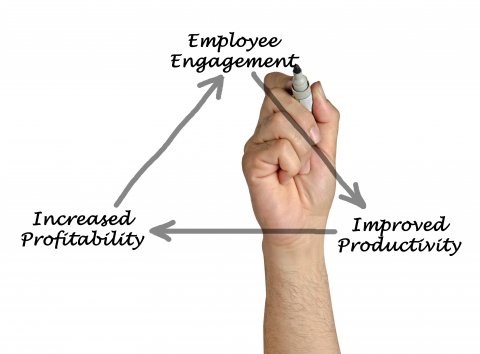Medical Insurance May Not Be Enough to Protect Employees Prt. 4
Medical Insurance May Not Be Enough to Protect Employees Prt. 4
Mar 02, 2020

How Employers Can Help - By Understanding the Causes of Employee Financial Issues 

Causes of financial issues are being considered by new programs, as HR and benefits managers realize that not all financial problems or hardships are because employees are spending too much money each month.
As the workforce becomes younger and its financial needs are changing, more organizations are taking a broader approach to helping employees face short-term money issues that range from crushing student debt to saving for a house or assisting aging parents.
Employees are receptive to employer assistance. A survey found more than two-thirds of workers (68 percent) feel their employer cares about them and their wellness, and 79 percent of employees trust their employers with their financial information. According to a recent Harvard study, offering financial wellness benefits reduces employee turnover and increases loyalty. 1
Employers cannot afford to continue to turn a blind eye to their employees' financial wellness. Although historically, employers have considered personal finances to be none of their concern, the connection between financial wellness and workplace productivity is now too important to ignore. Employers have been able to leverage their scale to lower the cost of insurance and other benefits for their staff. Similarly, now, through salary-linked loans, employers can help their employees avoid high cost debt and/or get out of debt and improve their credit scores. These conversations must be brought to the forefront to improve the lives of millions of employees currently suffering.
Action over Education
"In the past, companies may have overemphasized [financial] education," said Betsy Dill, Los Angeles-based senior partner and U.S. financial wellness leader at the consulting firm Mercer. "But that may not be moving the needle in terms of people taking action."
Instead, Dill said, employees need help making the right decision without sitting through "hundreds of hours of education." A simple example is defaulting employees into the company's 401(k) program. However, many financial-wellness professionals say that truly effective solutions need to be a lot more involved than that.
For example, Kent Allison a partner and national leader of PricewaterhouseCoopers's personal financial education and wellness practice in Florham Park, N.J. noted that education should be delivered in the context of employees' needs at that moment. "Teach them about the impact of loans from their 401(k) when they're about to take one," he said. "Educate them at the right time and at the inflection point, at the moment when they have to make a choice."
A key to doing this right is understanding that people at different stages of life have different priorities. Jeff Tulloch vice president of MetLife's PlanSmart financial education program in Danbury, Conn. put it another way: "Money's very personal and everyone has different needs.2
Engage at All Levels
This transformation from financial education to financial wellness requires the active involvement of HR in order to succeed. "You have to be persistent and make it a priority," said Sean Furlong, the director of finance at the Gilman School in Baltimore. "We're very active with our vendors. We meet on a regular basis to discuss plans, what we are doing, how our population is doing financially and are they participating."3
But the real key is for the employer to visibly examine the causes of how employees get into financial difficulty. Not only does this demonstrate that the company is taking its workers' financial issues seriously, but it makes the effort more effective by choosing vendors that can provide the right resources for employee and reach the right people with the right solutions.
"HR needs to work with companies that [understand the causes of financial wellness] to reach the people who need help the most," said Sarah Newcomb, a behavioral economist at Morningstar and HelloWallet in Washington, D.C. HR has focused on identifying the people most at risk and holding sessions that show employees how the program works and how it will make their lives easier.4 But sessions are not always enough if you have the targeted employees incorrectly identified. “Basically, HR needs to understand how different programs can work together to solve or prevent financial wellness," says Robert Heston, LegalEASE’s Chief Executive Officer.
Linda Robertson director of planner operations for the financial wellness services provider Financial Finesse in El Segundo, Calif. agreed. "If the organization wants to move the needle, it needs to come from within," she said. HR as well as the CEO, division heads and other leaders have to say, "This is important."5
Successful financial wellness programs have ongoing communications campaigns behind them, Robertson added - campaigns that are embedded in HR's own messaging. Otherwise, employees may look on vendor-produced materials as "just marketing."
Make It Personal
HR also should look at personal financial issues from the employees' point of view, said Allison.6 And, here again, one size doesn't fit all. Workers' needs don't vary only by generation, he noted, but by region, educational level and other factors.
While most large employers pride themselves on the variety of benefits they offer, they can overwhelm employees if they don't package their offerings properly, Dill observed. For instance, employers may not understand how voluntary benefits such as supplemental life insurance might work with retirement savings to provide for beneficiaries under a worst-case scenario or how health savings accounts can help with high deductibles in consumer-directed health plans.
"Employers need to look at how they integrate these solutions into a more employee-first experience," Dill said.
Finally, Allison noted the importance of asking yourself whether employees are really using your organization's financial wellness programs and which ones are having the most impact. "Making sure benefits are actually working is one area where HR can improve," he said. "It needs to be more proactive. This is a hot topic because it's actionable and measurable."7
Focus More on the Causes of Financial Problems for Employees
In the last study the American Bar Association did, they found that “70% of employees will have a legal problem in the coming 12 months.”8 The result is that legal problems are far more prevalent than many believe.
What happens is that while HR managers are wondering if their employees actually have a financial problem, perhaps these managers should be thinking about whether different events in their employees’ lives may have legal consequences. All employees face big events. With our ever-complicated society, come more and more complicated social issues, like financial issues, child issues, health issues, housing issues, support issues, family issues, education issues, neighbor issues and all kinds of similar problems that may have direct or indirect legal consequences.
Next time we will look at more ways how employers can help by understanding the causes of employee financial issues. Stay tuned...
By: Robert L. Heston, Jr., 2019
2/ “Employee Financial Wellness Survey,” Pricewaterhouse Cooper, 2016
3/ “Fintech Company Offers Free Financial Coaching to Workers,” Caroline Hronich, August 7, 2019
4/ “Pol: Americans Fear Crippling Medical Bills More Than Getting Sick,” Health Day News, March 29, 2019, www.upi.com/Health_News
5/ Id.
6/ “Employee Financial Wellness Survey,” Pricewaterhouse Cooper, 2016
7/ “Financial Wellness Success Requires Proactive HR - Workers’ Needs Vary by Generation Education and Other Factors,” Mark Feffer, 2016
8/ “Public Perceptions of Lawyers Consumer Research Findings,” American Bar Association Study, 2002.

